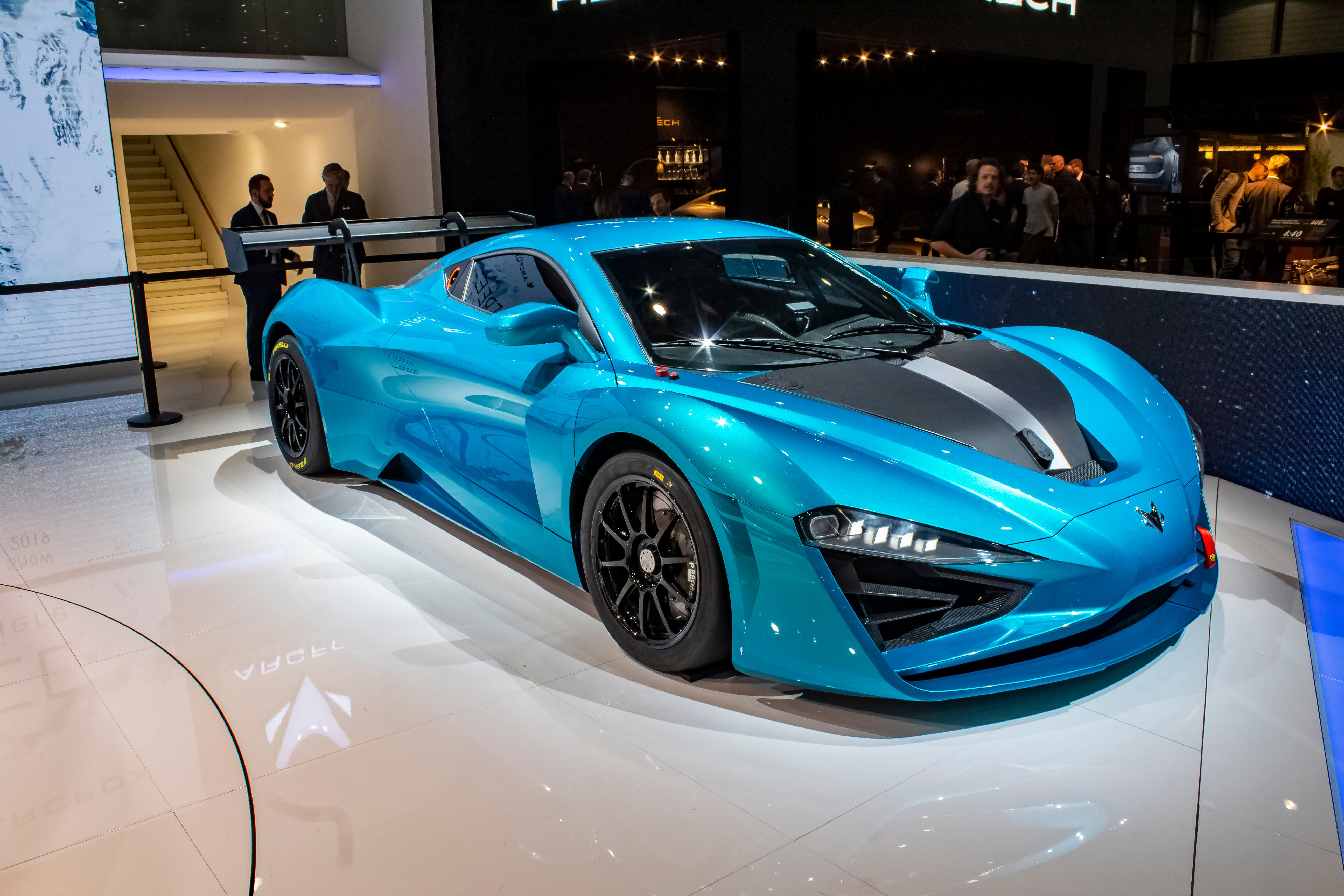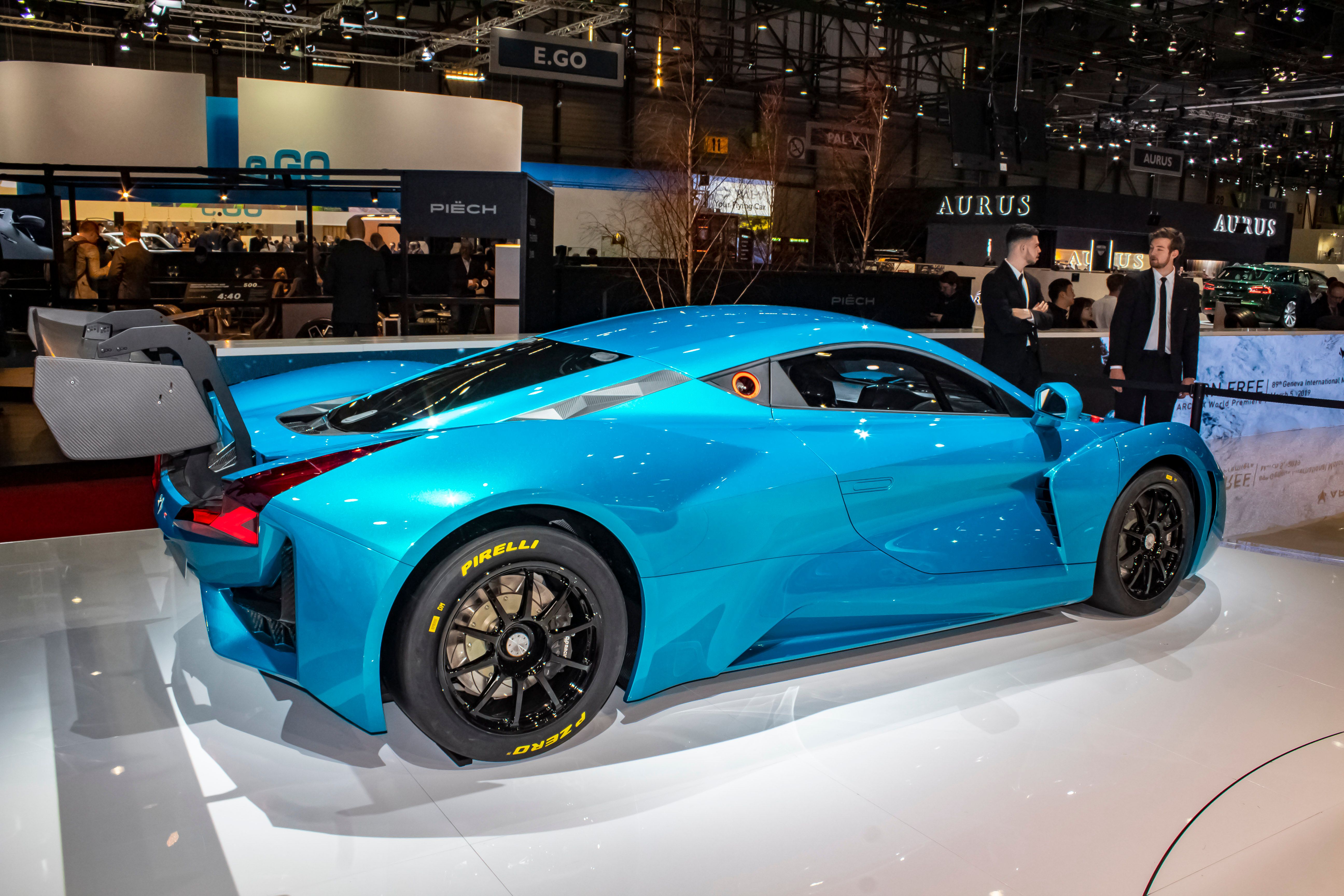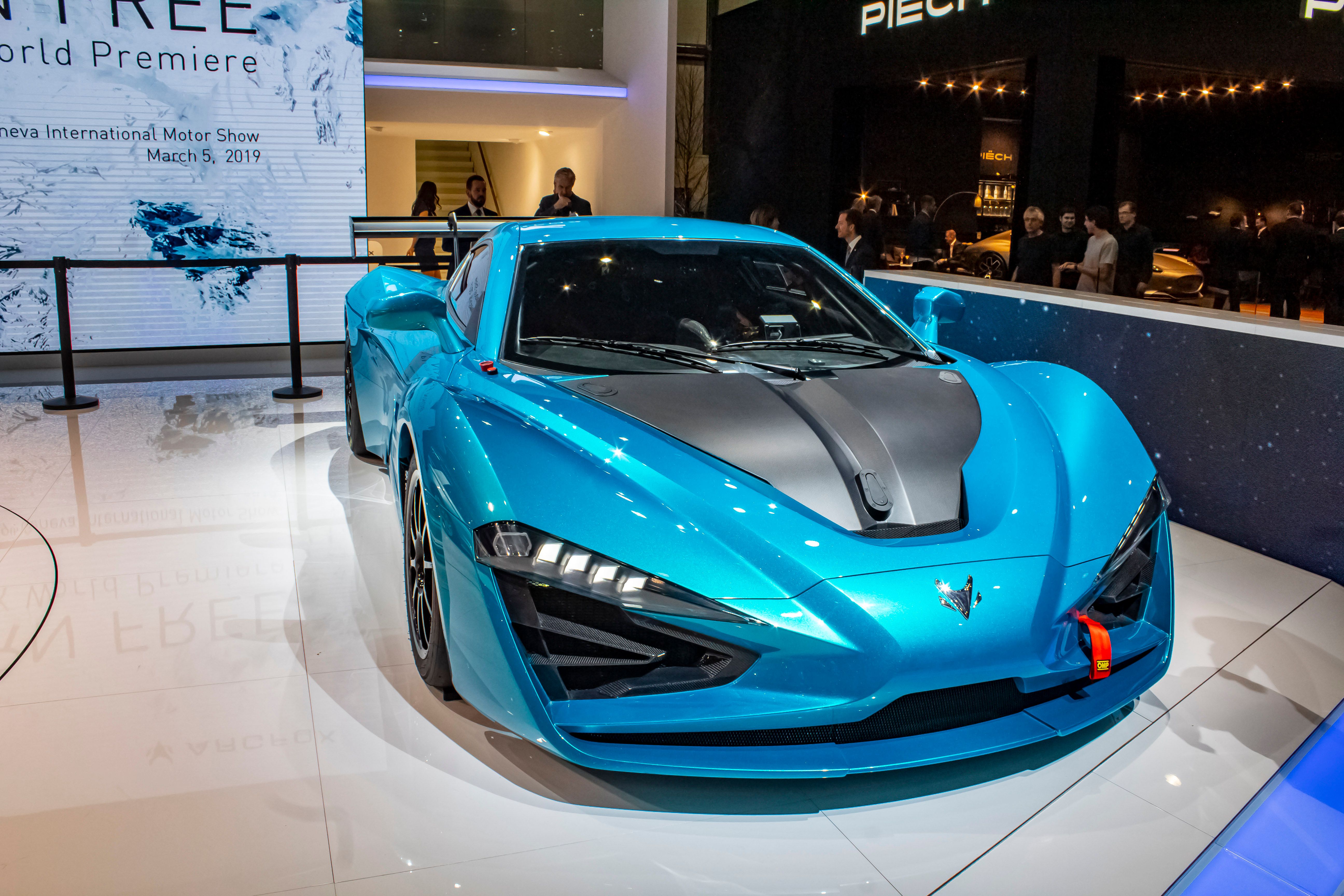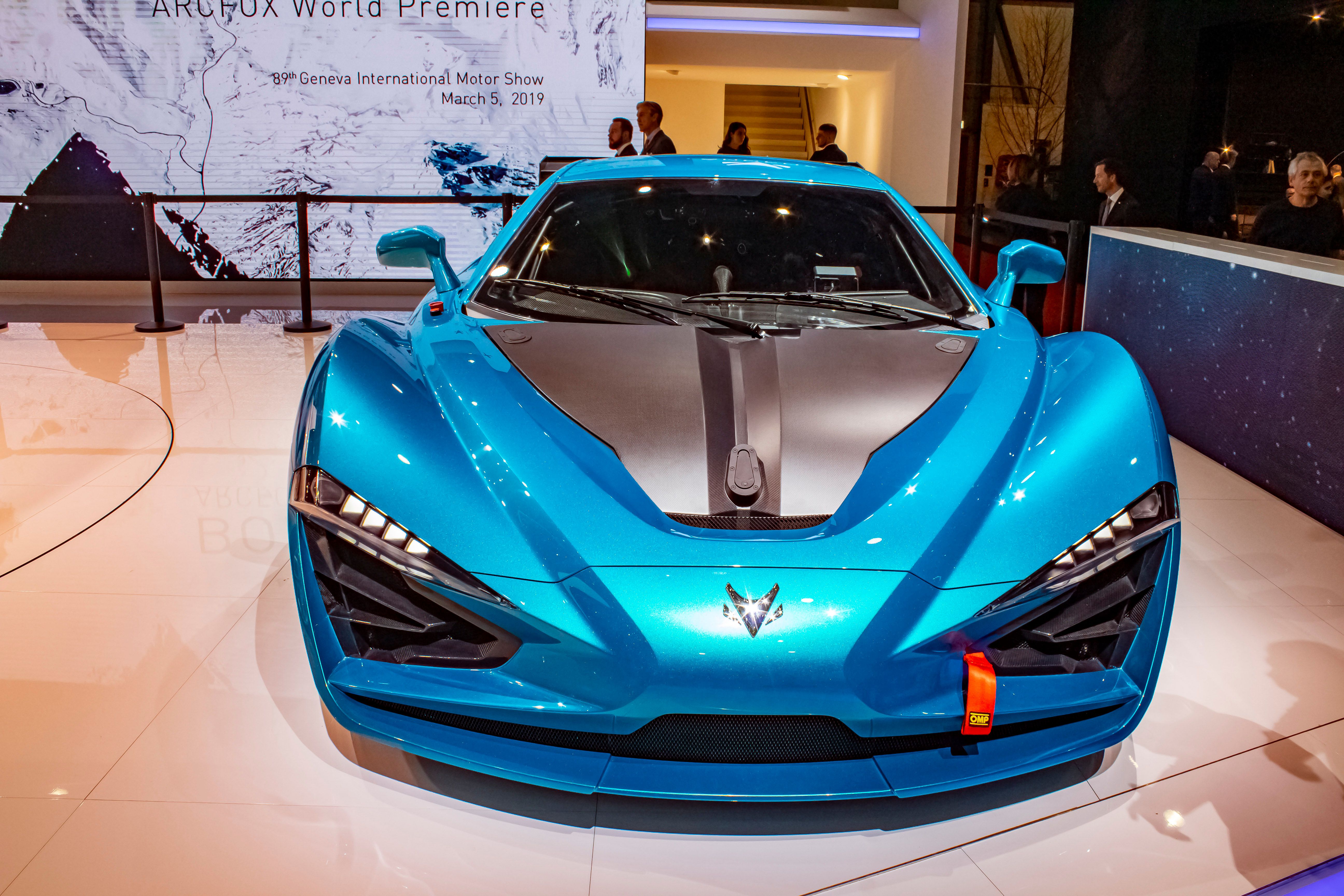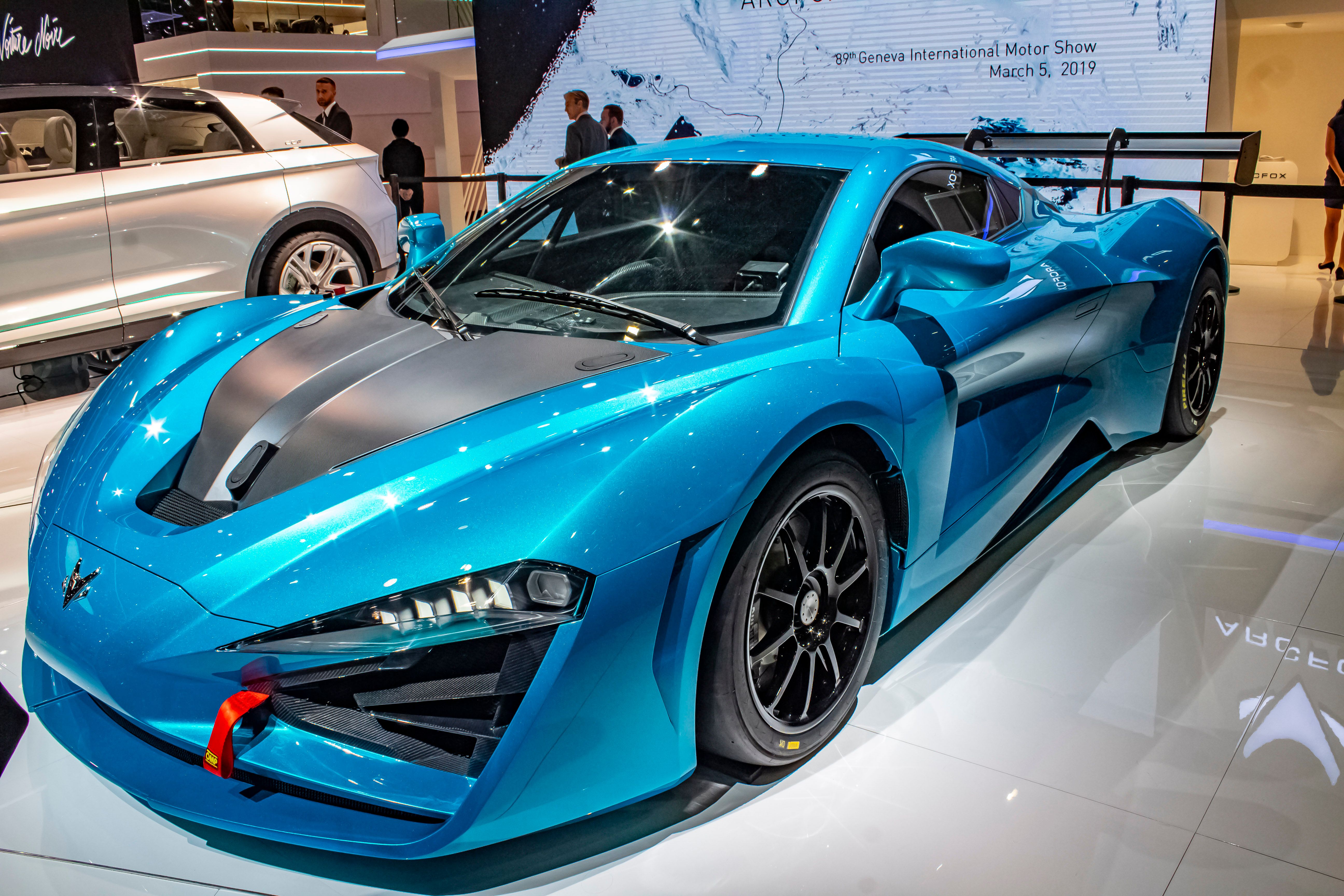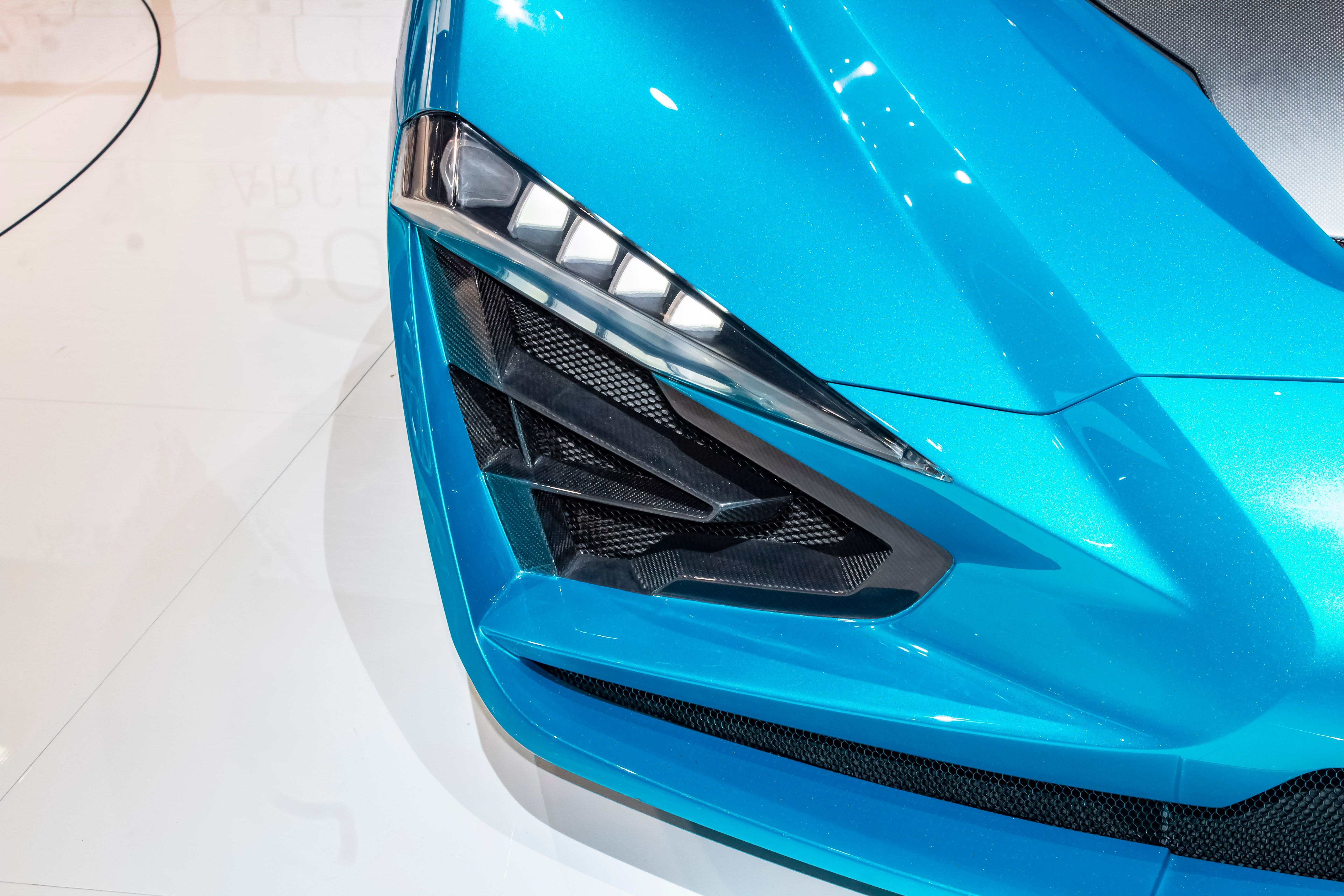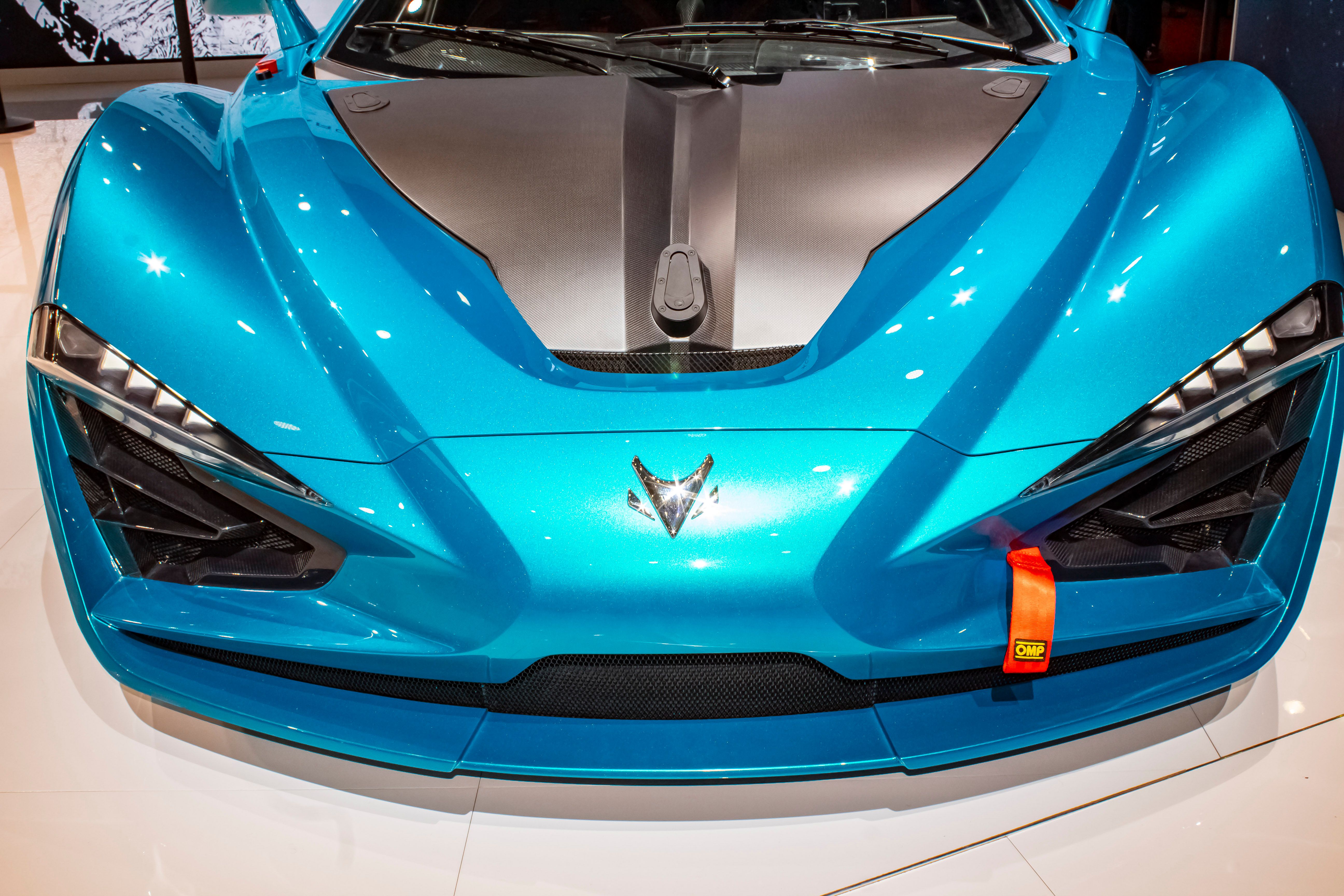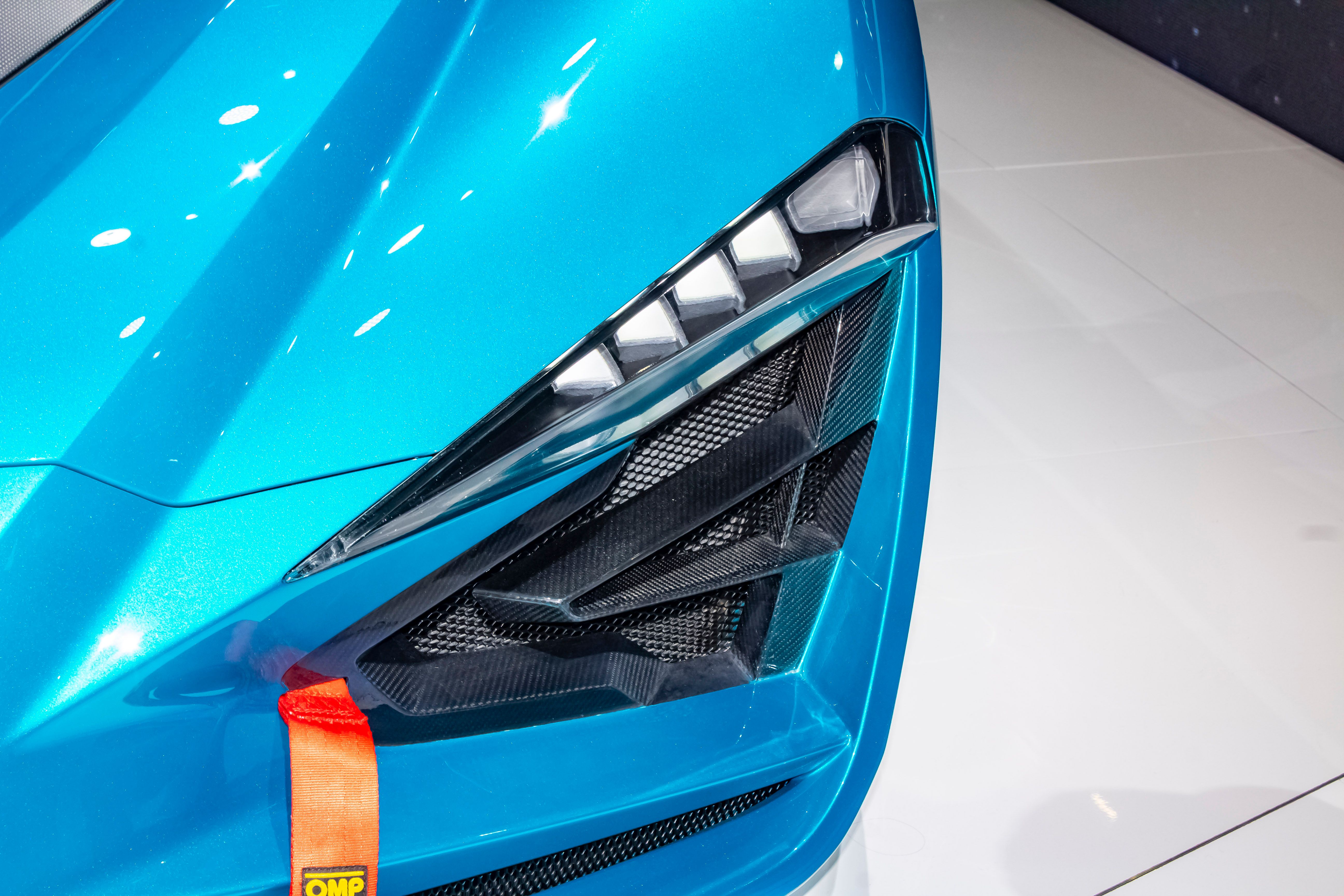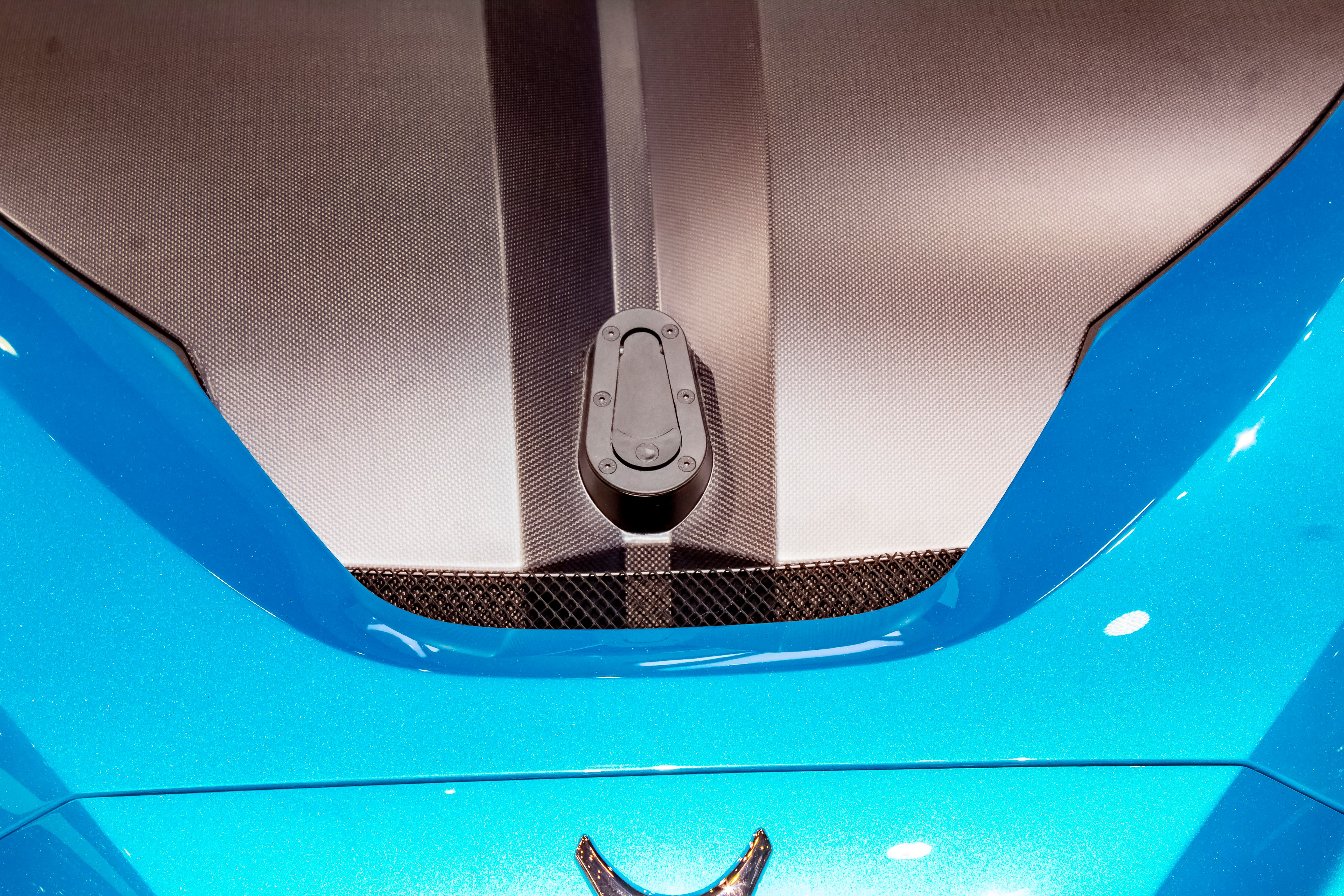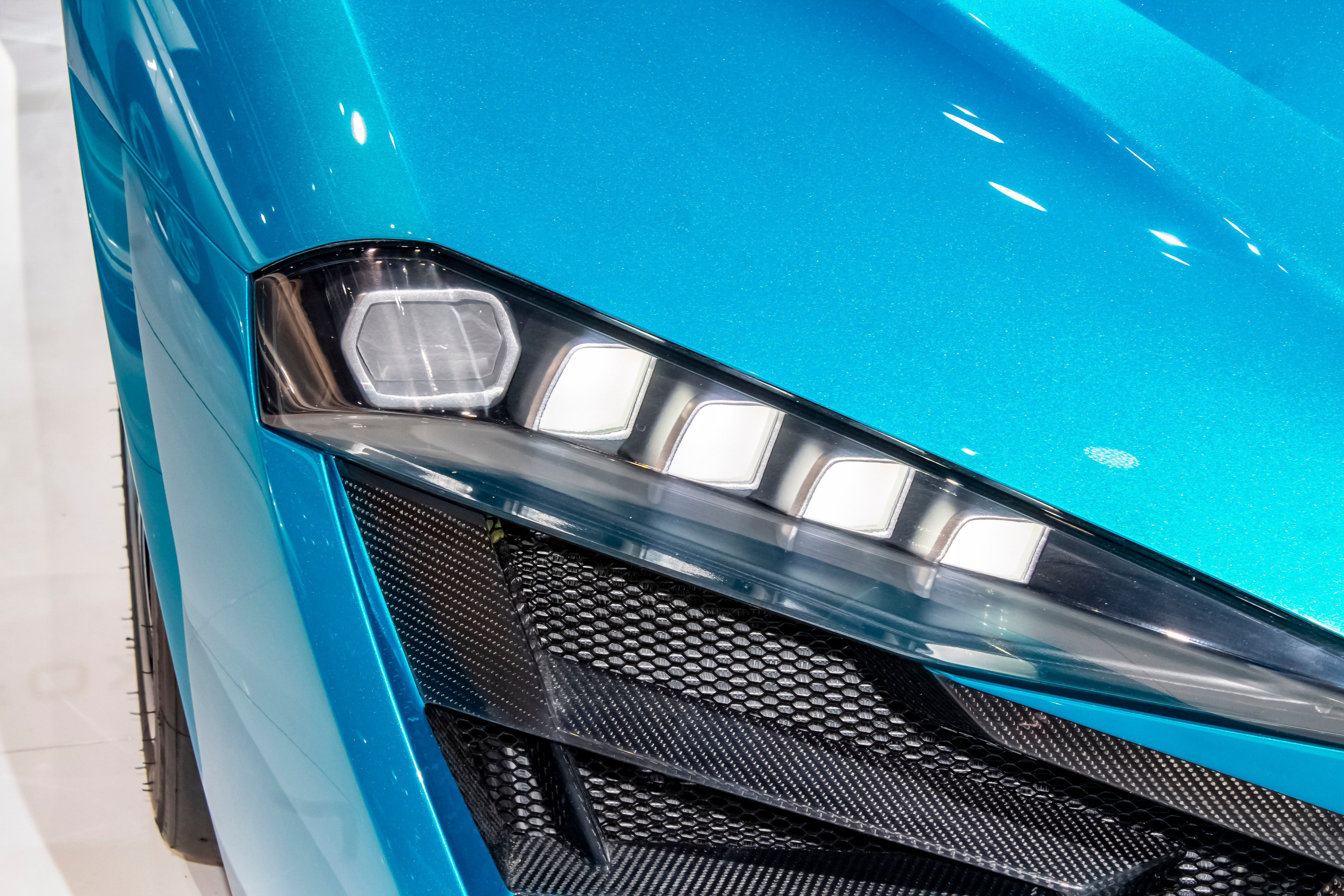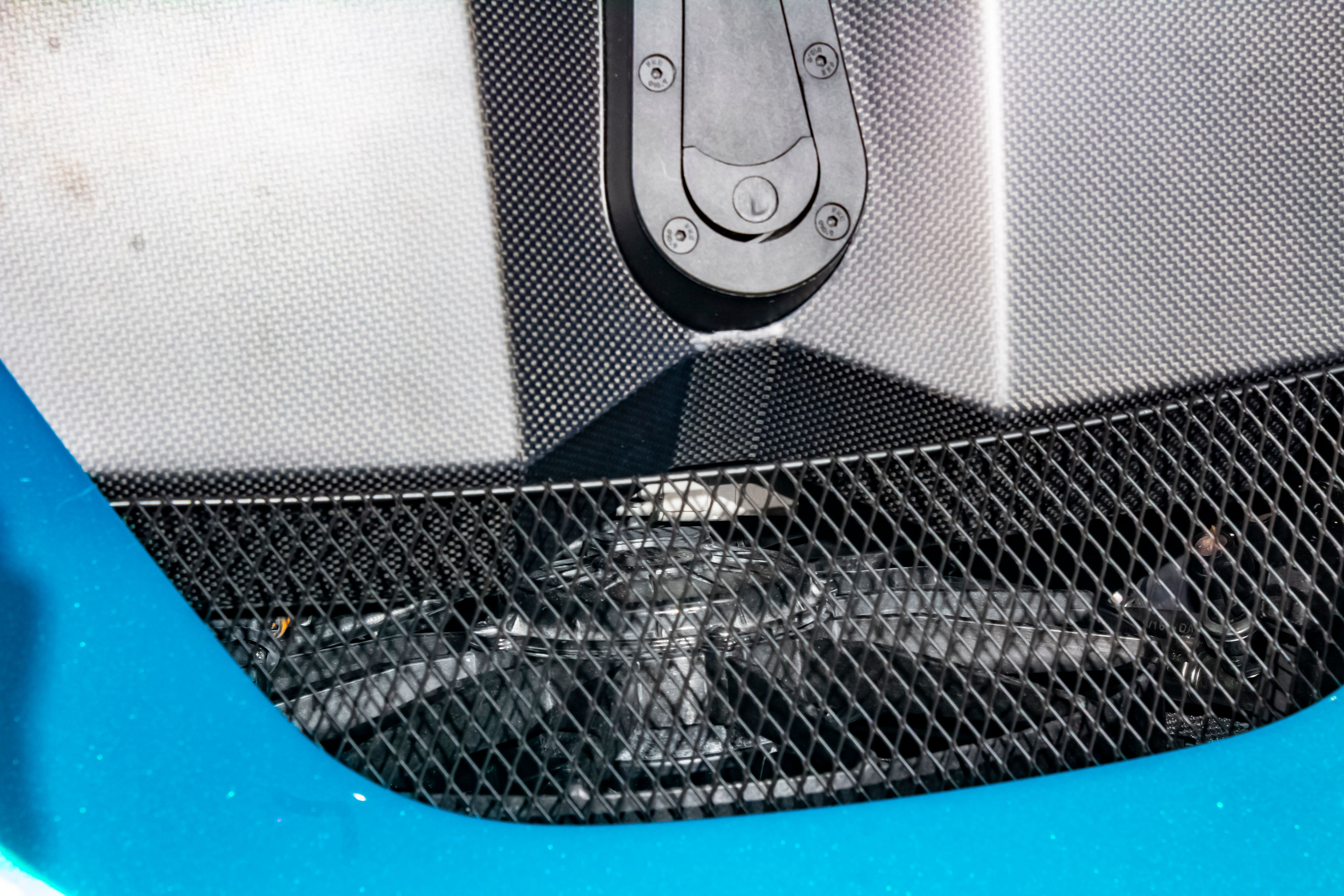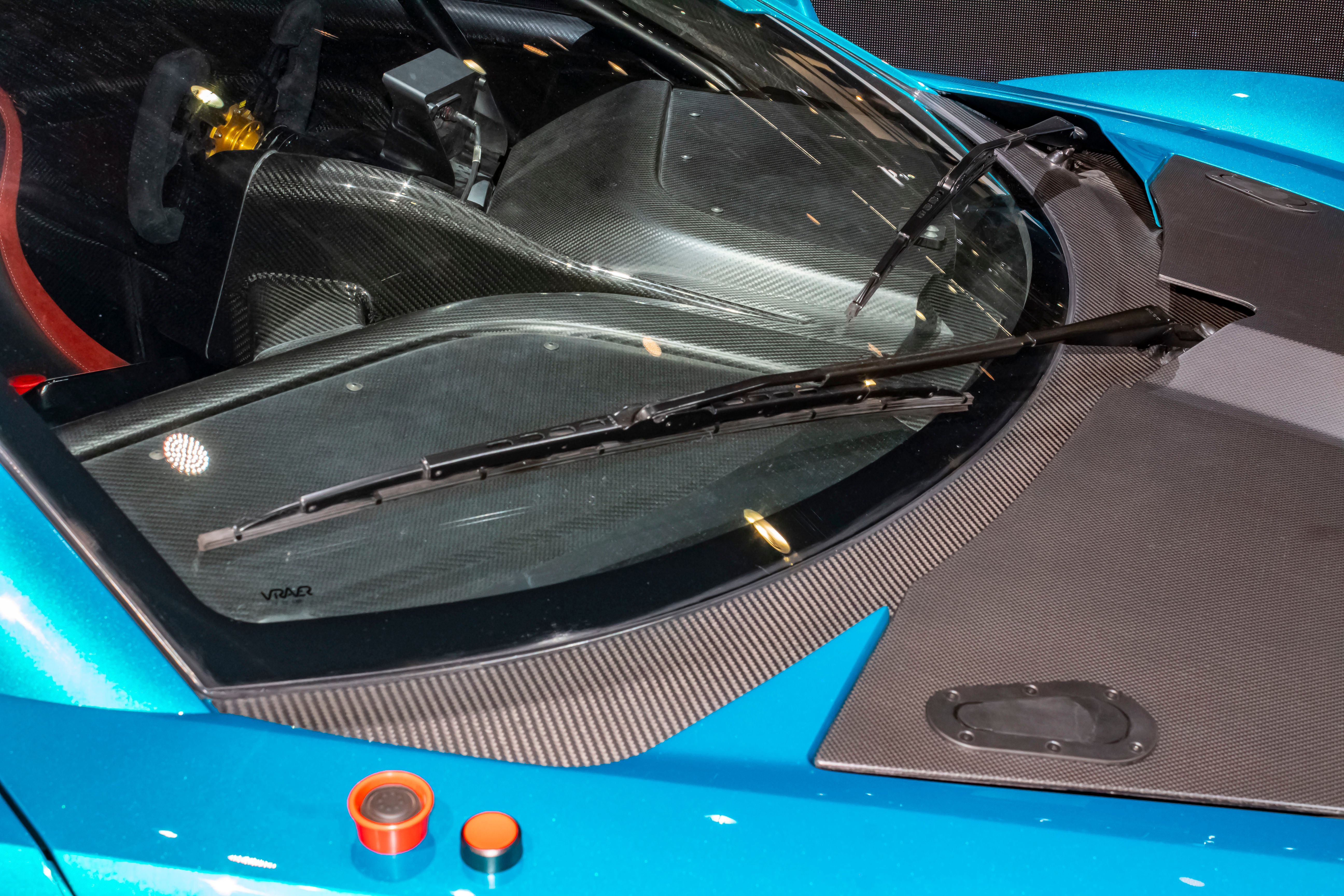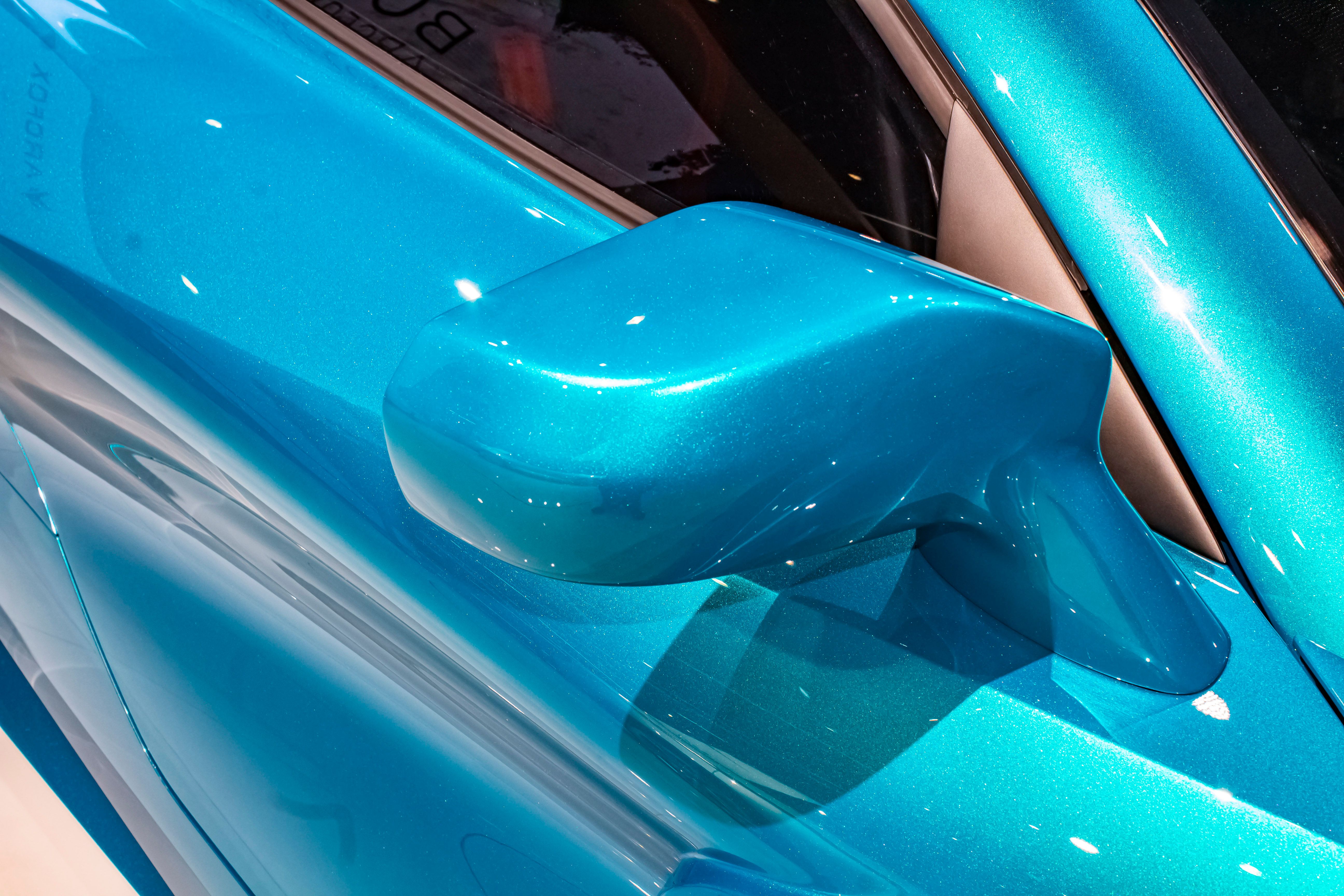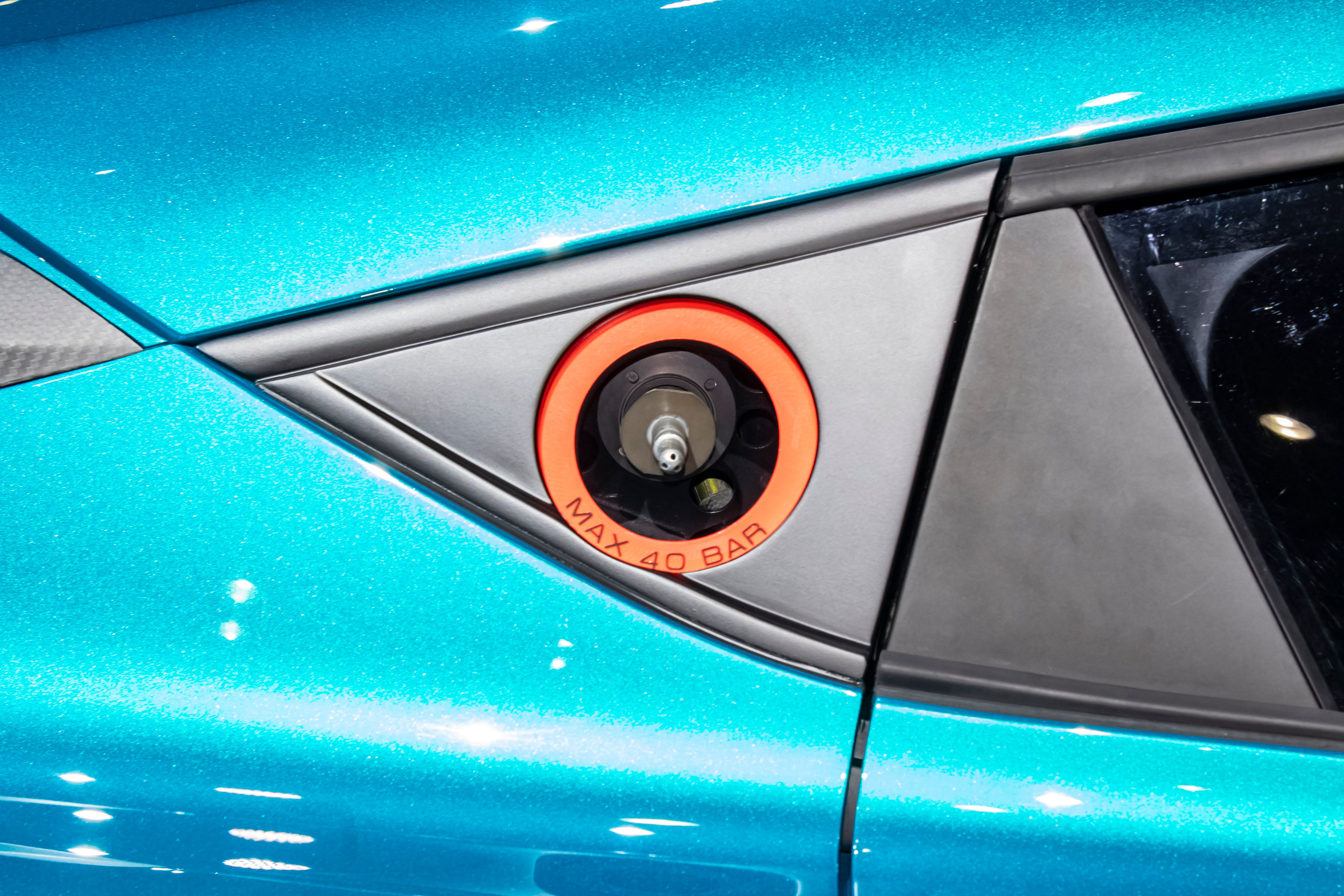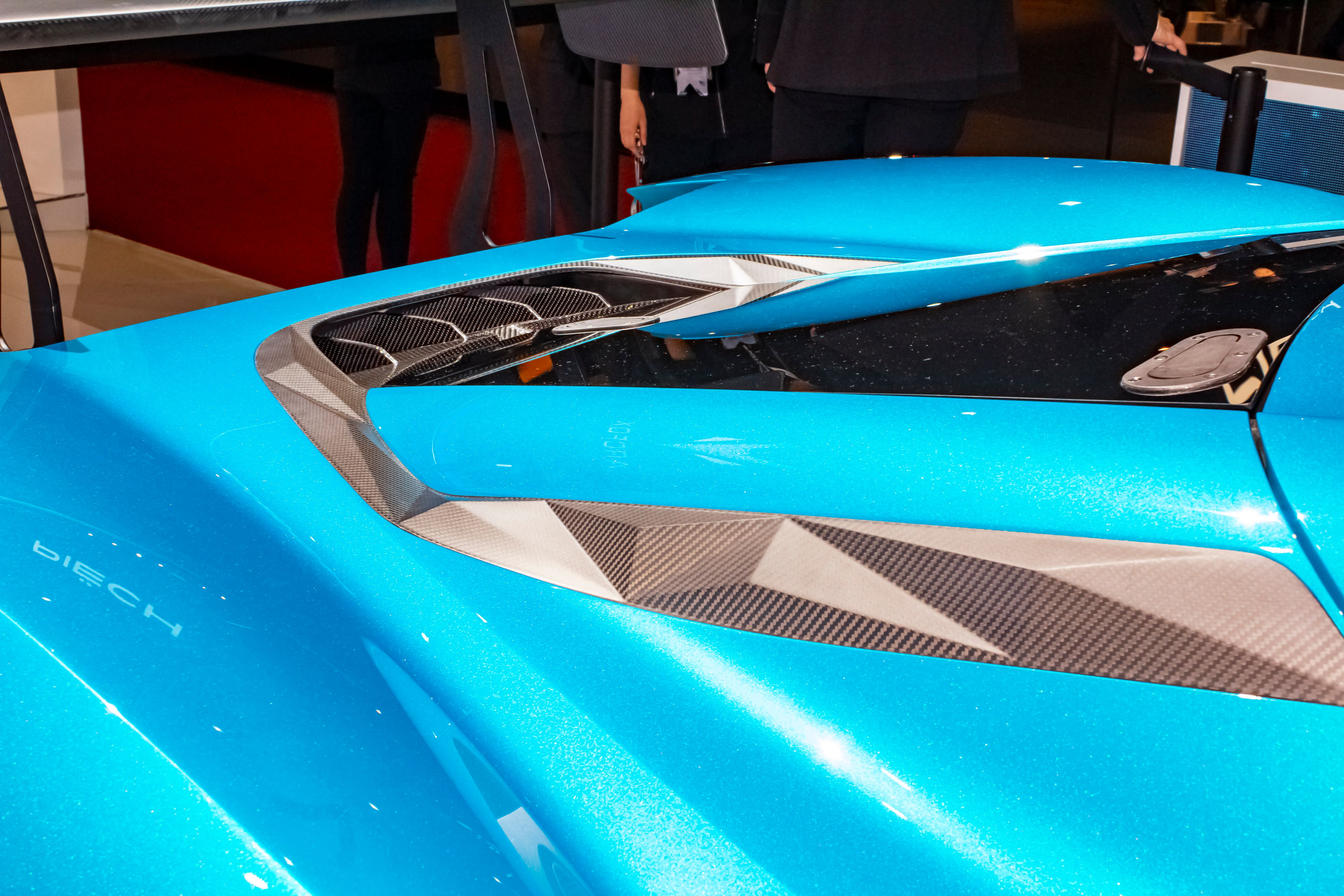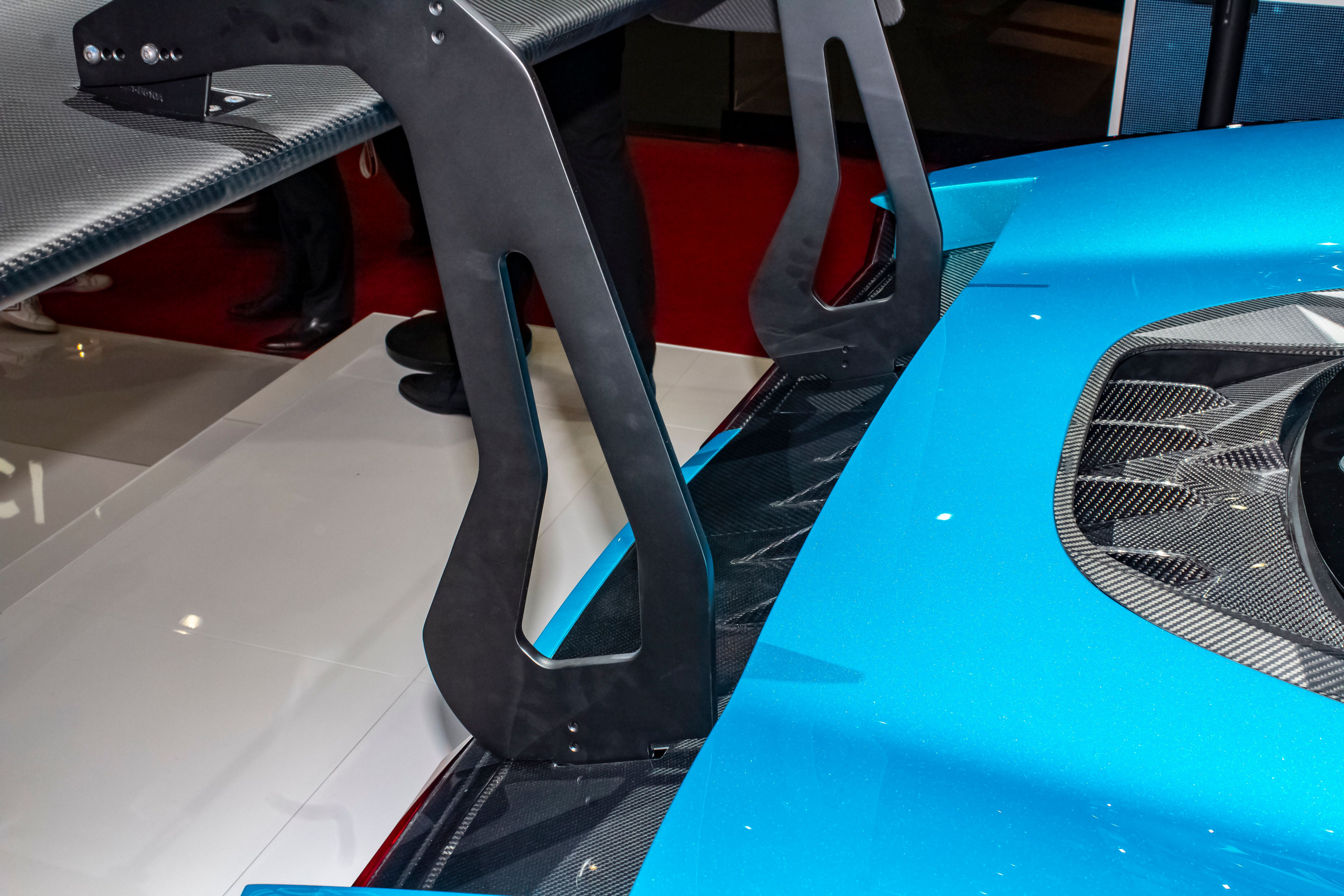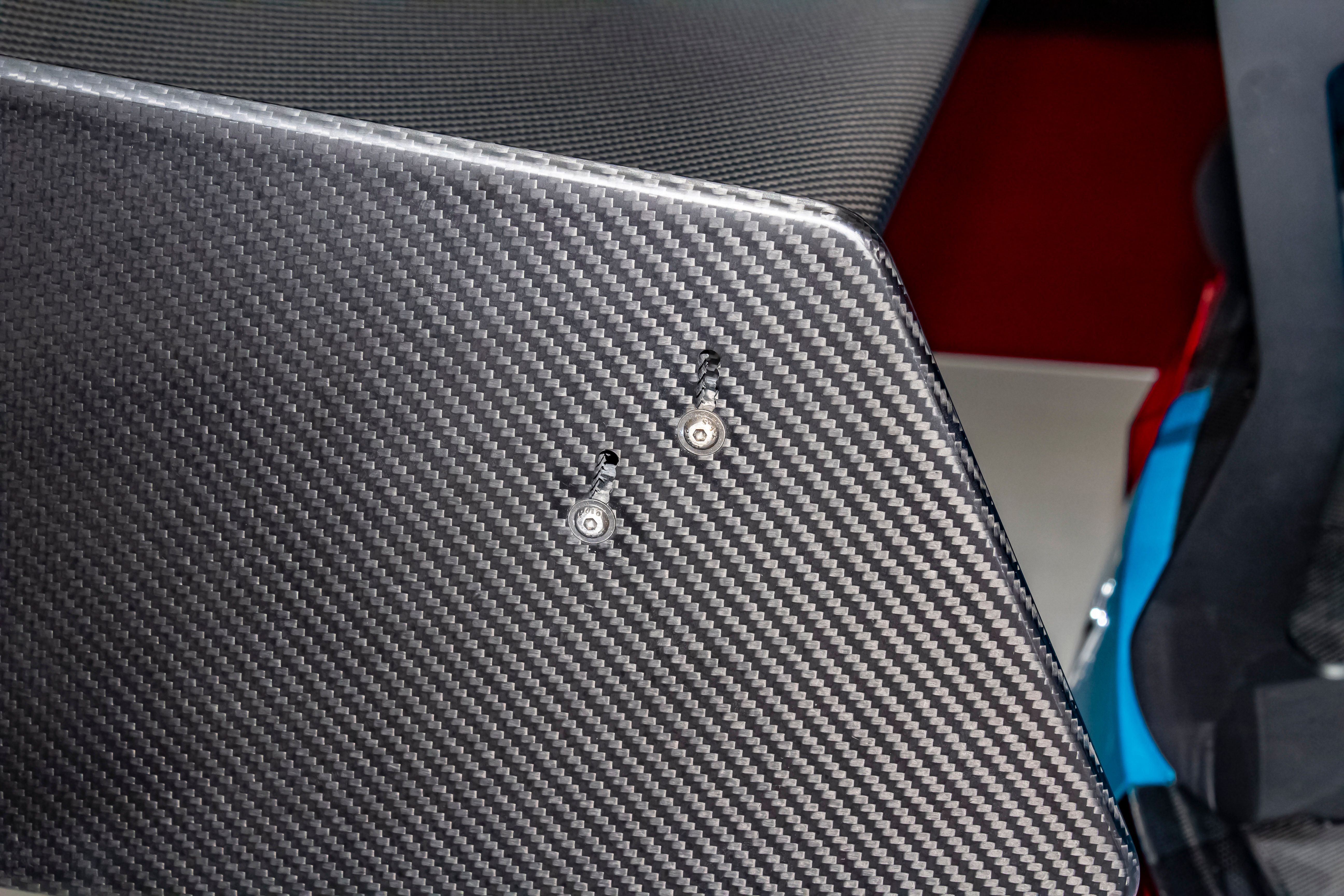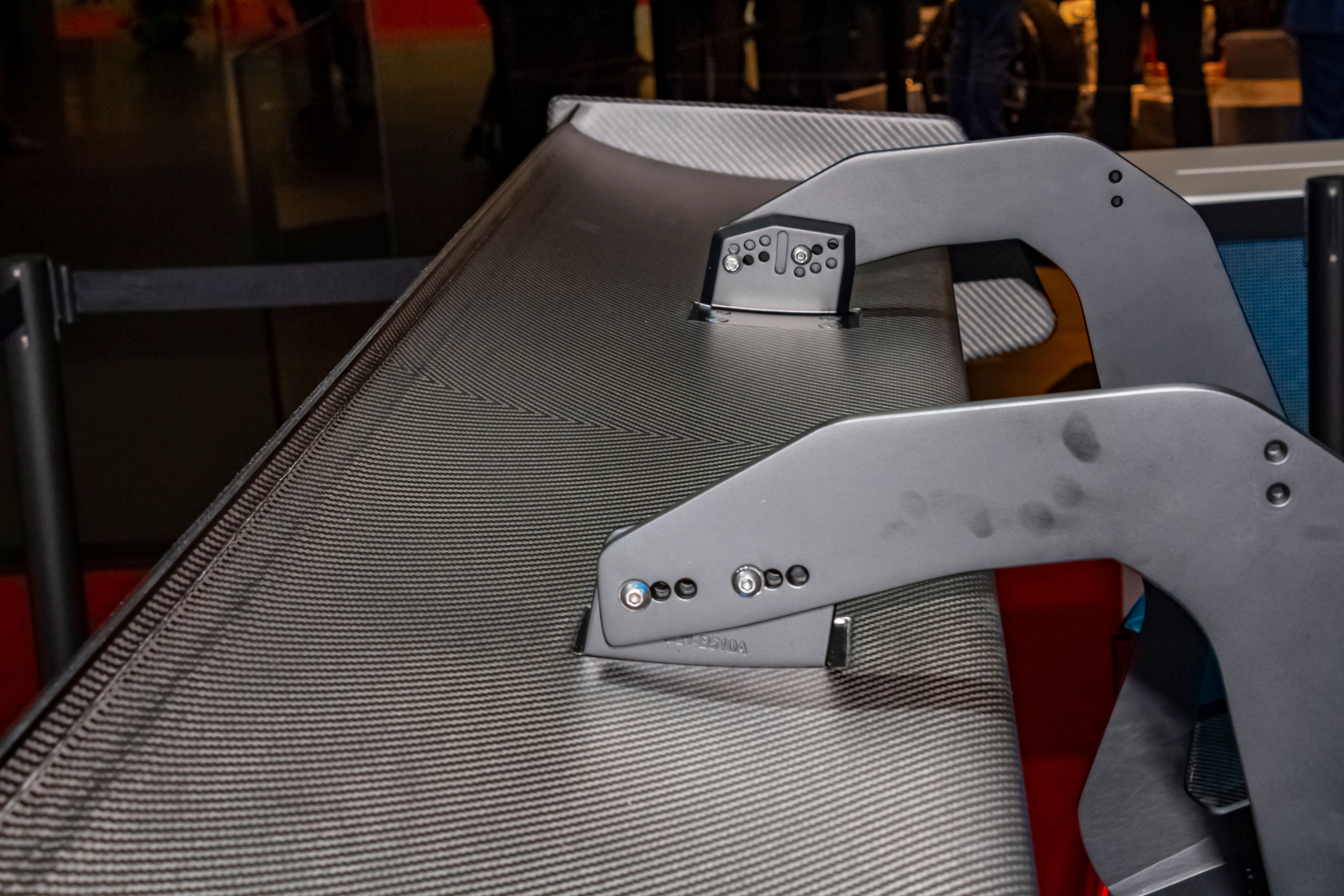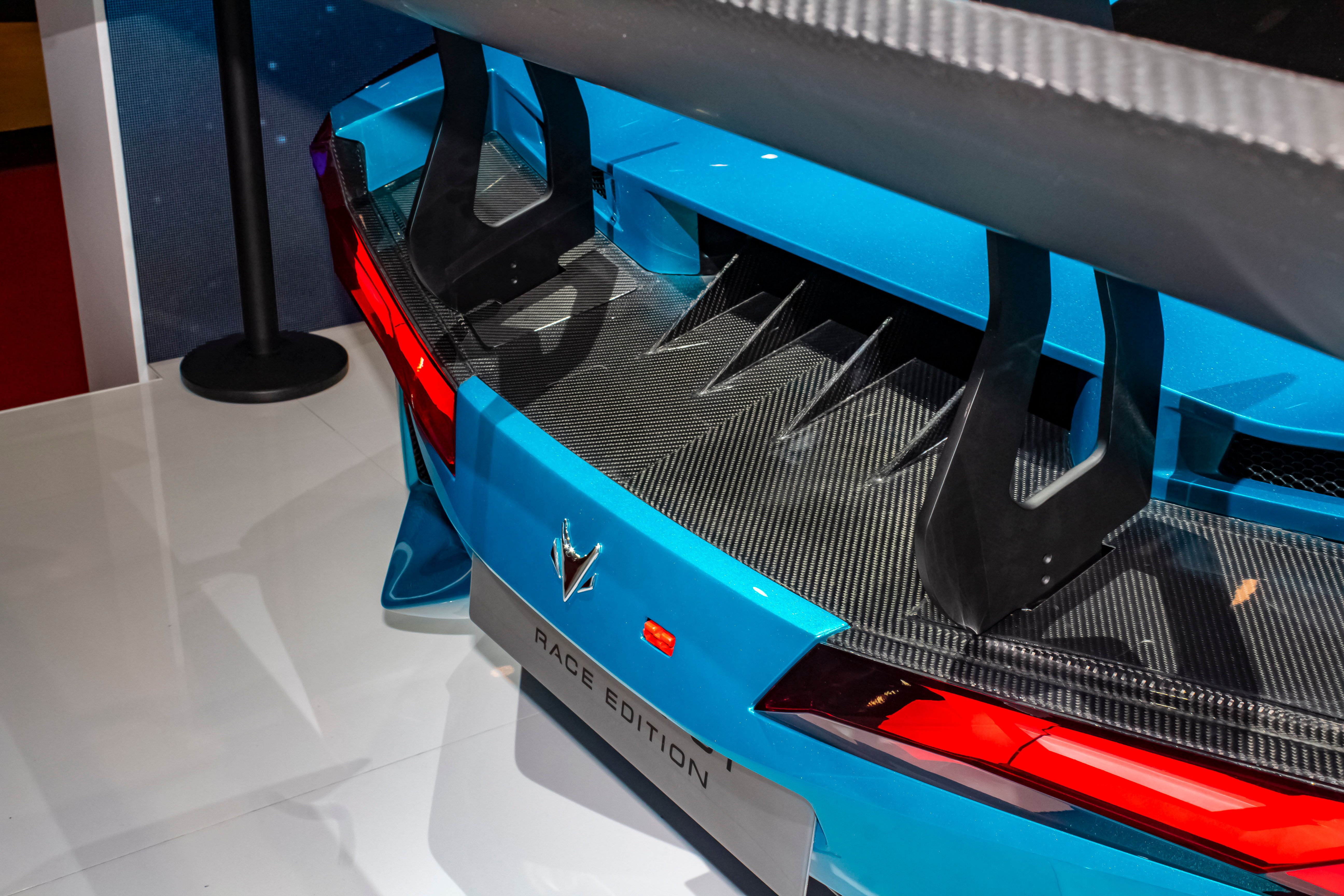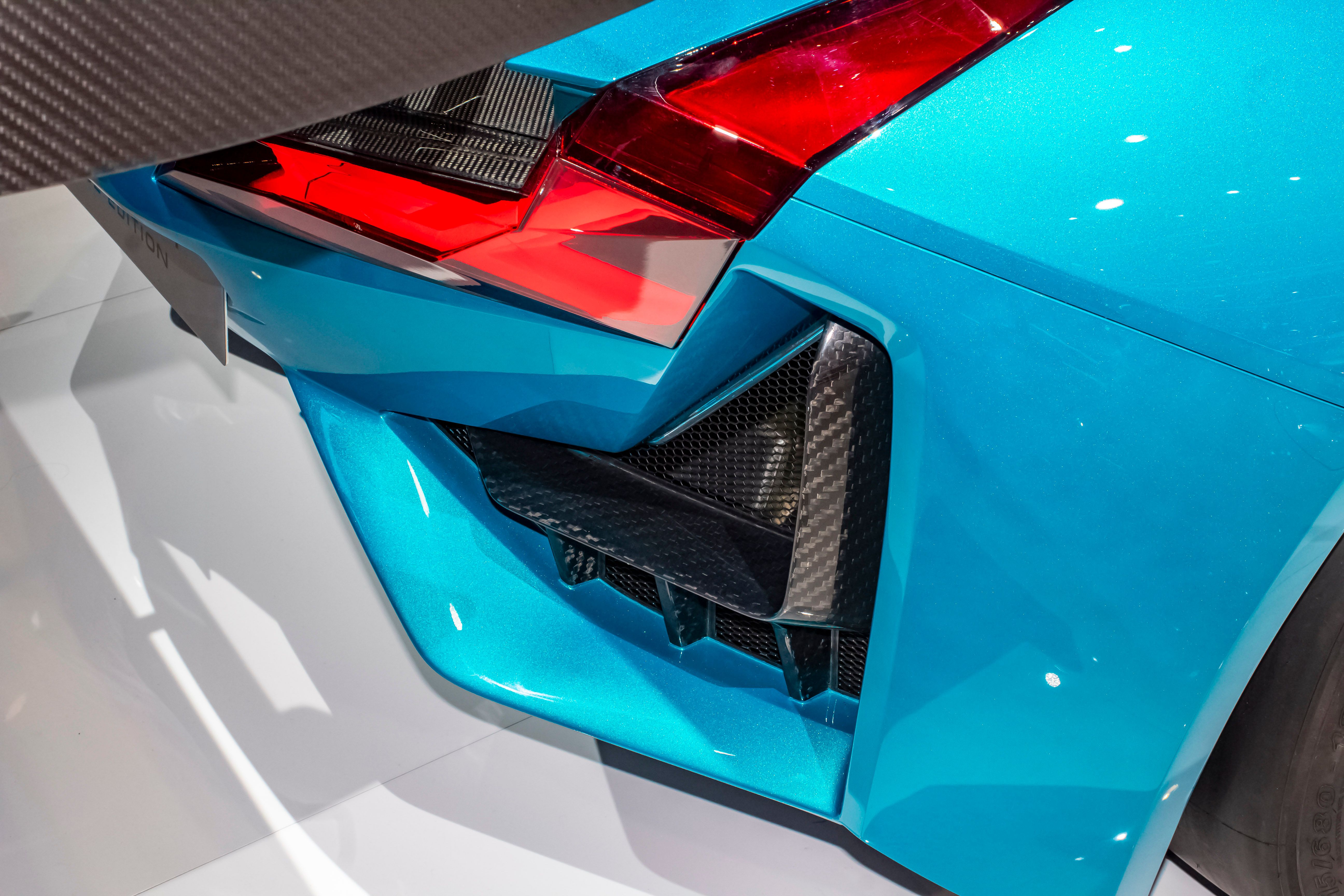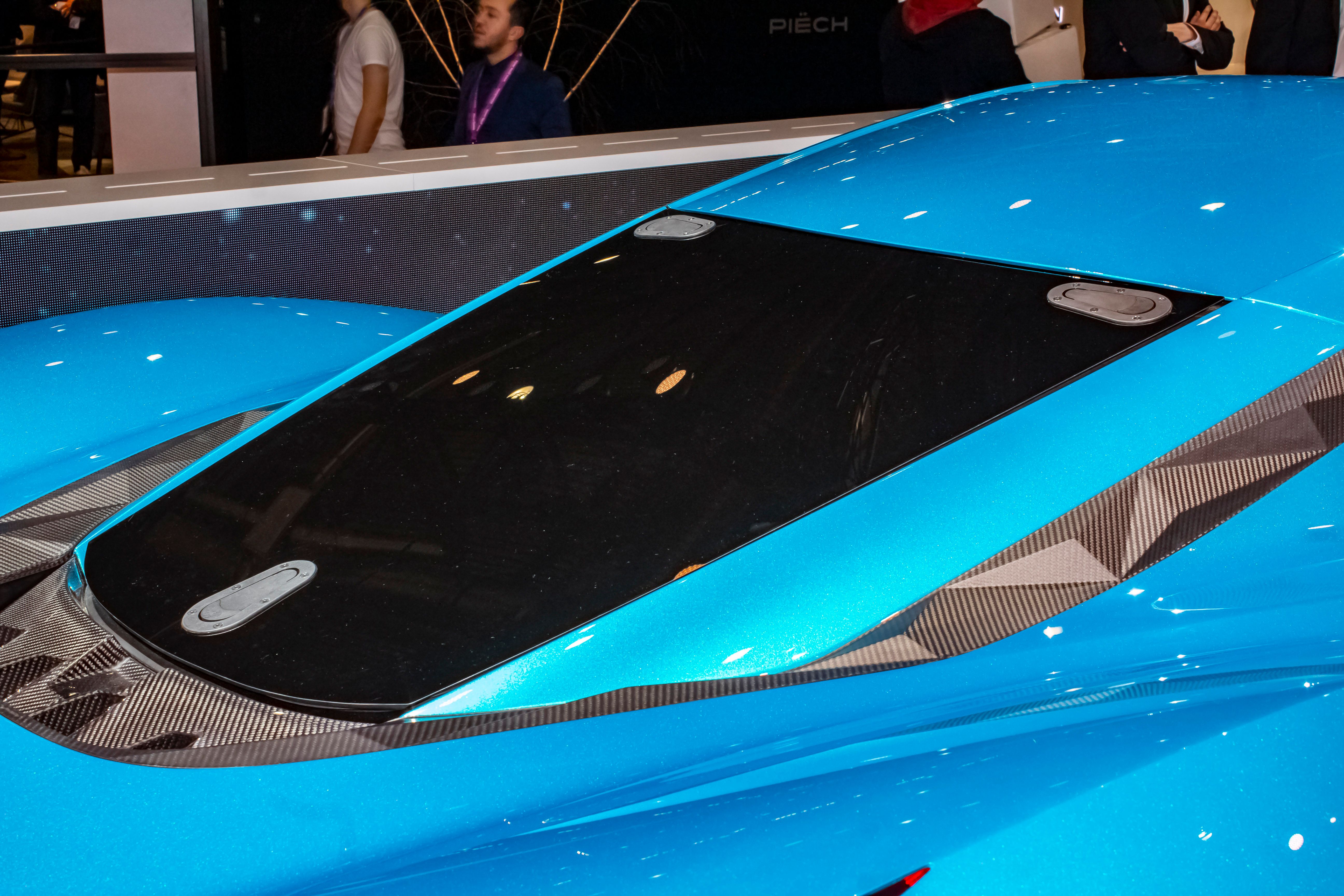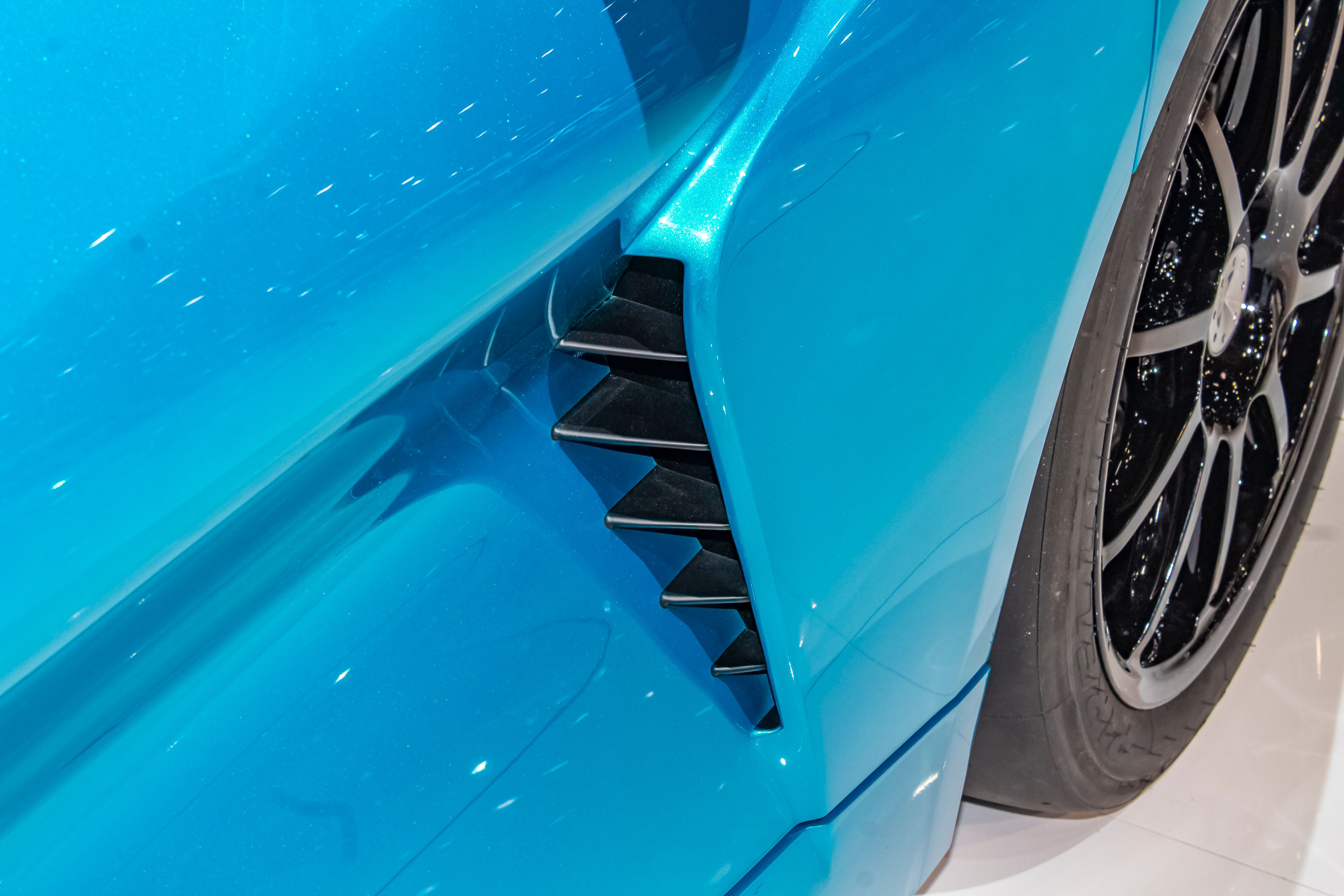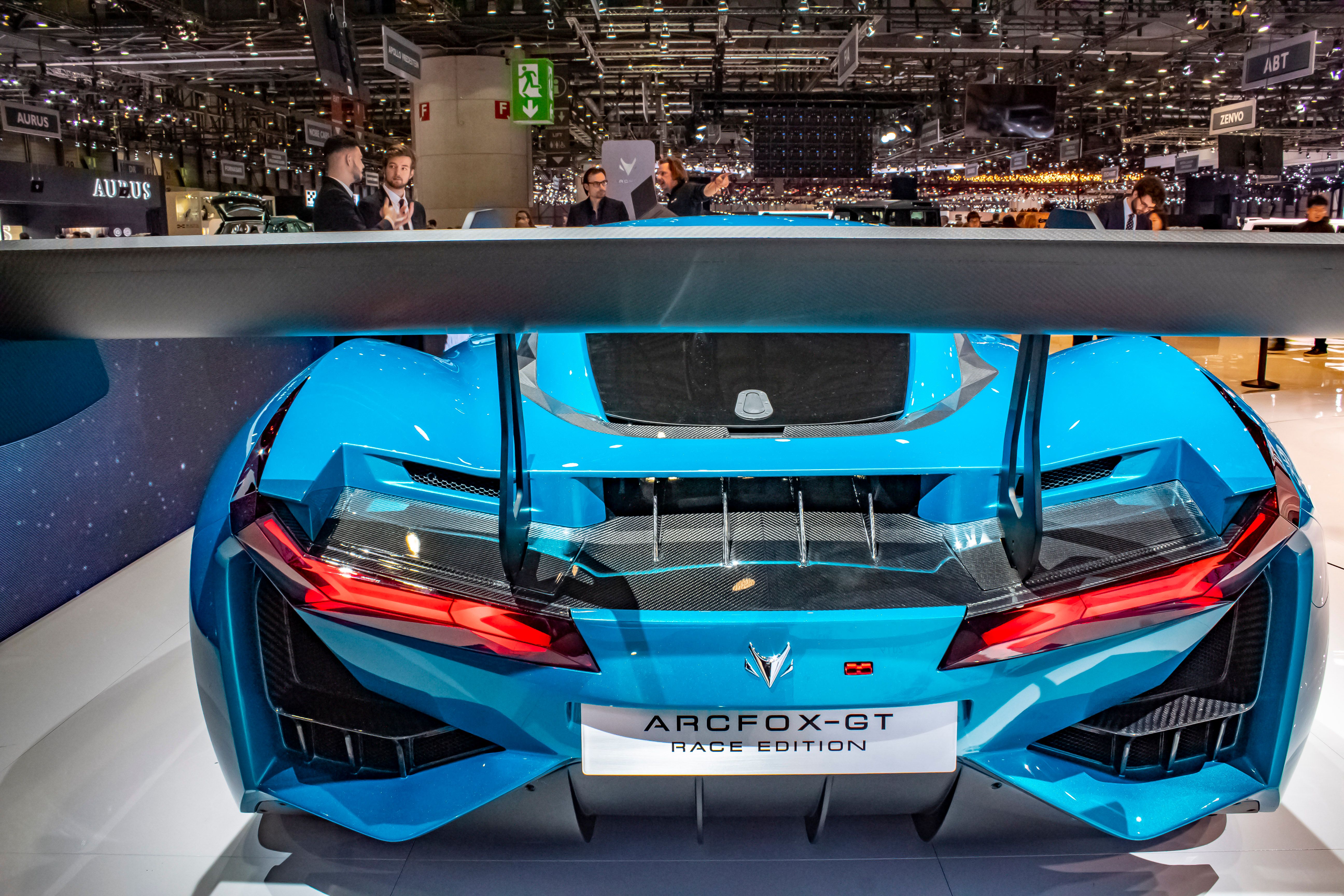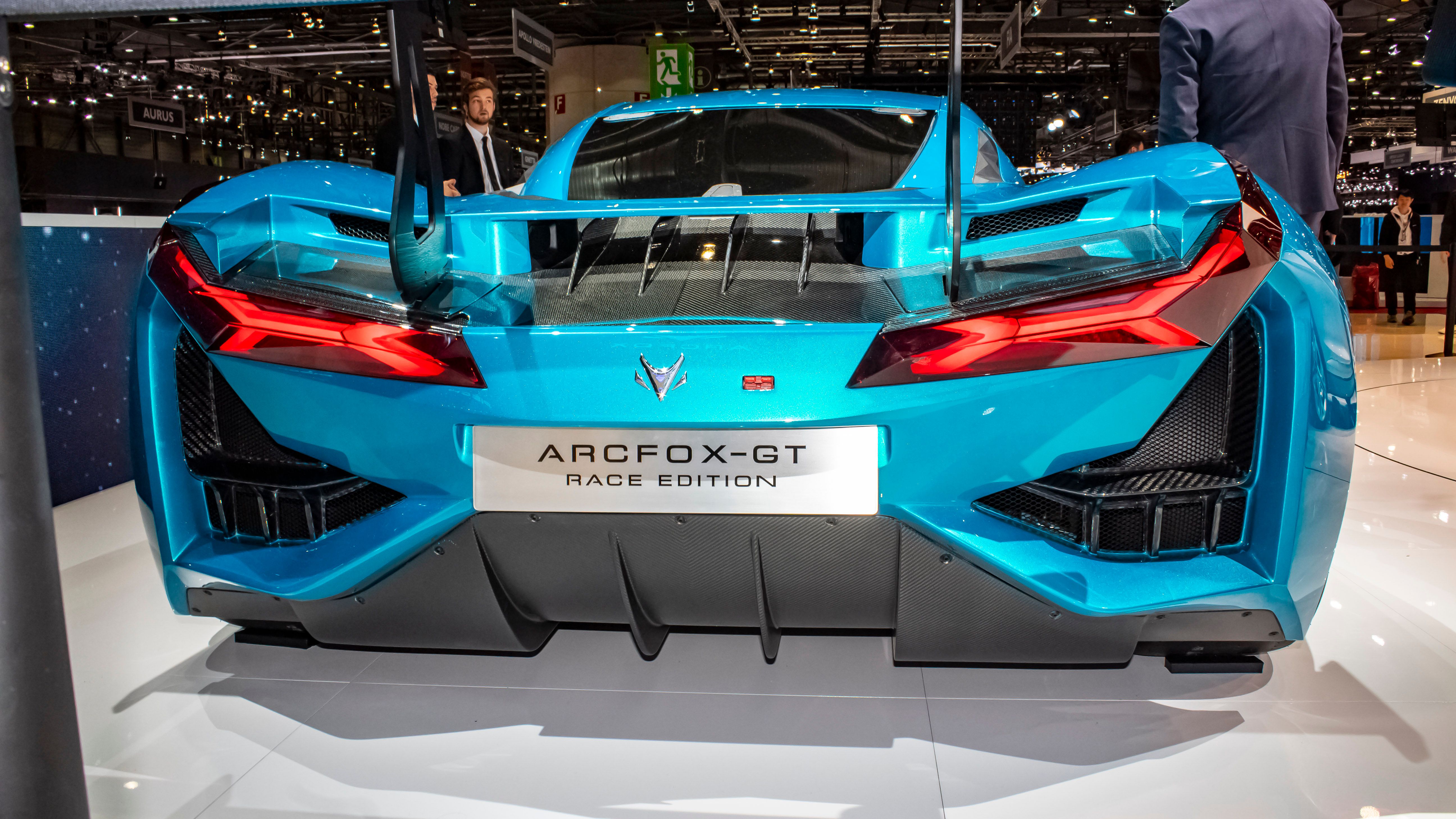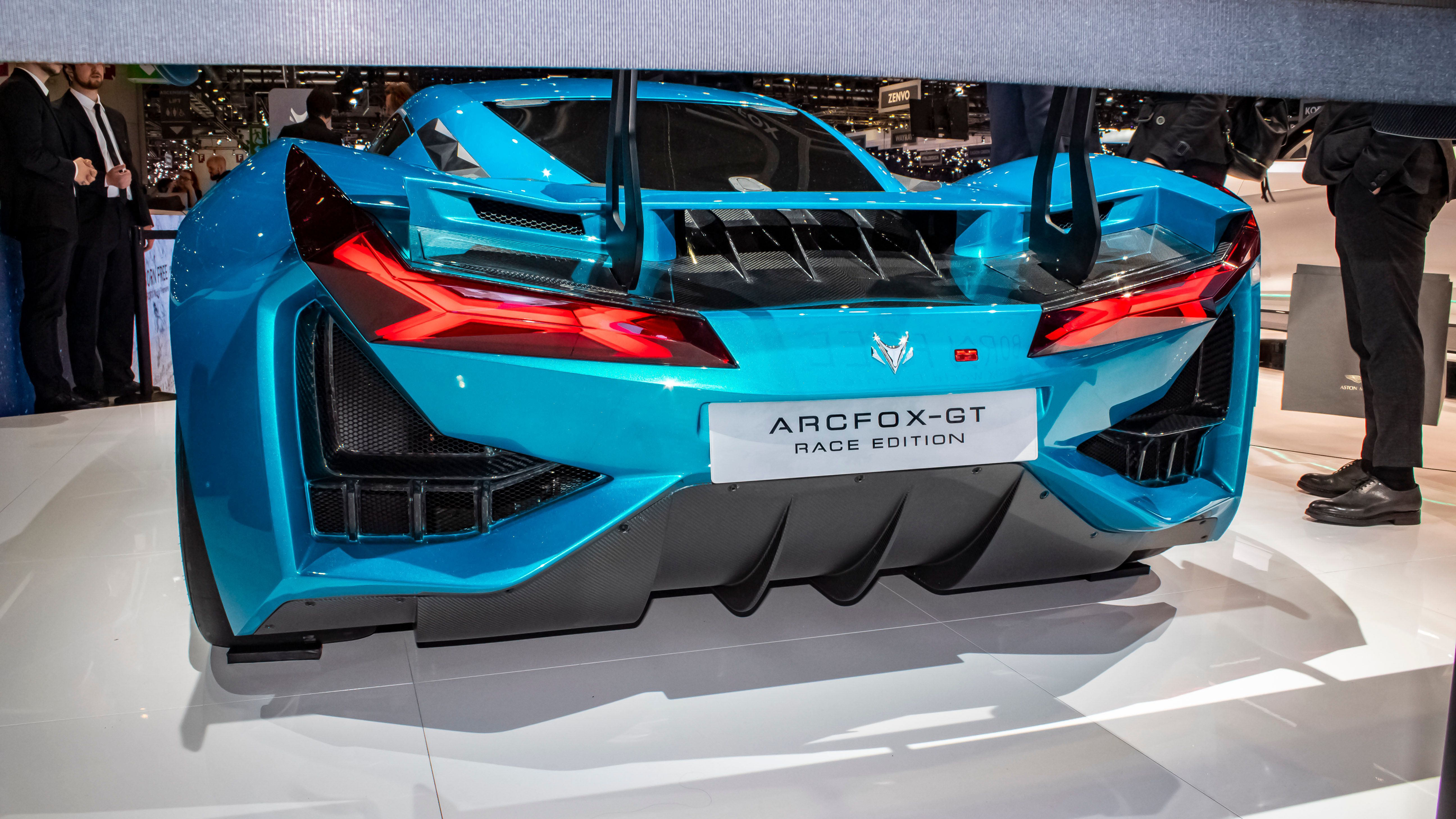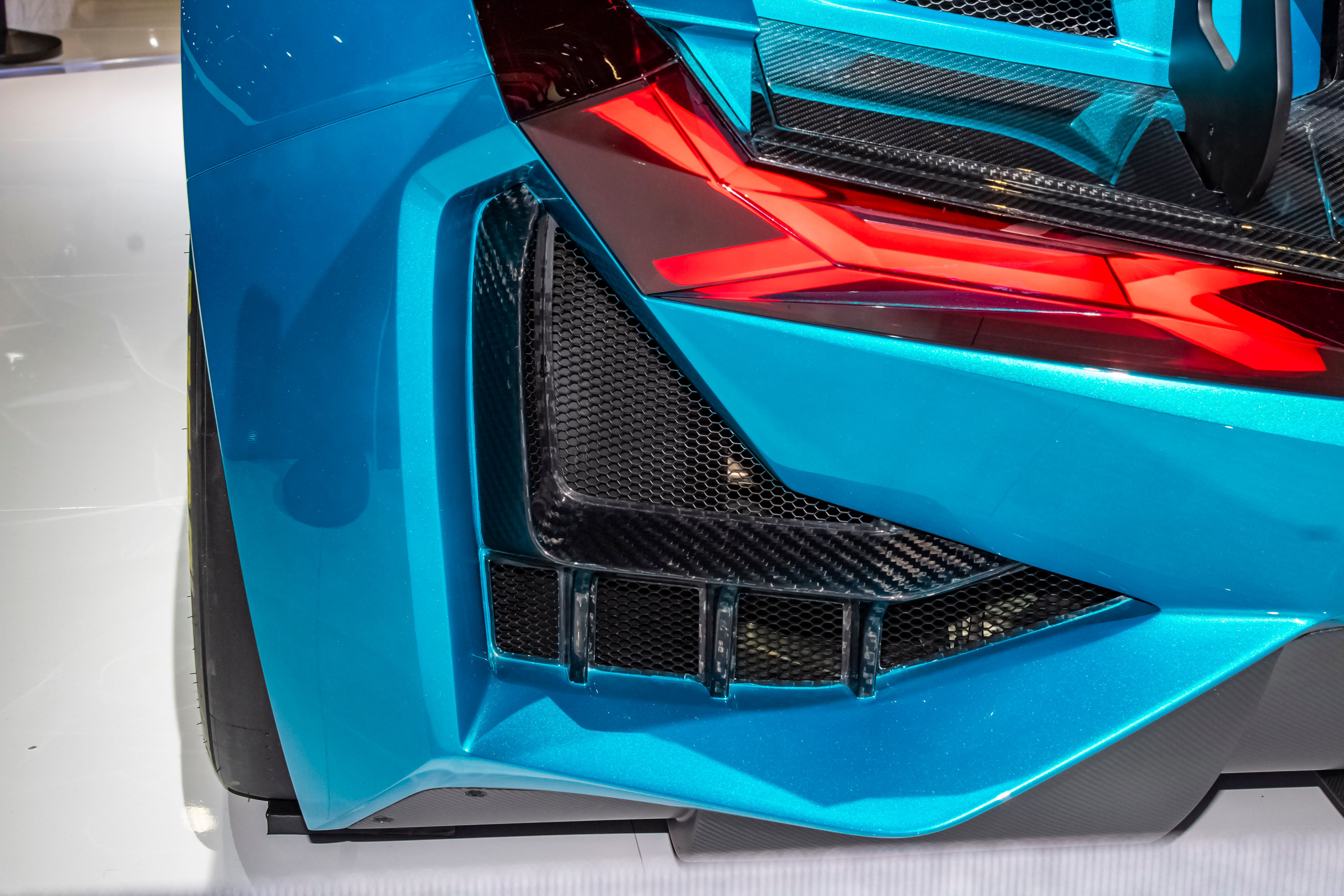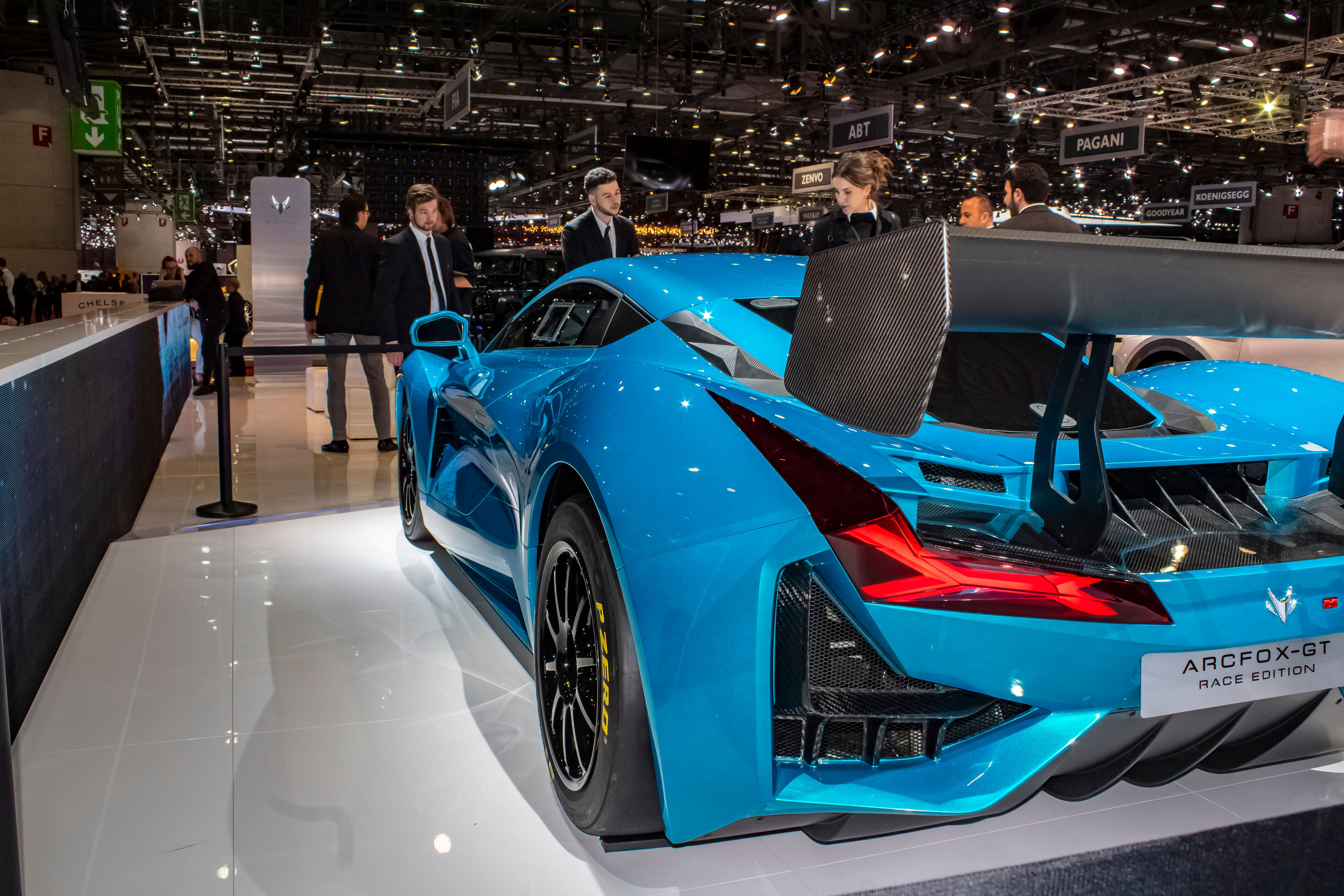The Chinese BAIC Group in cooperation with BJEV (Beijing Electric Vehicle) is trying to branch into the EV supercar world with the Arcfox sub-brand that was present at the 2019 Geneva Auto Show. The brand showcased three cars, the flashiest of which was, undoubtedly, the Arcfox-GT Race Edition. It's a track-focused version of the Arcfox-GT that puts out 1,600 horsepower and 973 pound-feet of torque, features GT3-esque aerodynamics, and relies on state-of-the-art tech solutions straight from Formula E championship.
The state-owned BAIC Group is quite the colossus in China. Besides making cars under its own name and under the Senova, Foton, and Changhe brands, it also produces Beijing Hyundai and Beijing Benz vehicles through joint-venture deals. It's among the five largest Chinese automakers and, now, over 30 years since it was founded, BAIC and BJEV have come together to launch a luxury sub-brand called Arcfox that brought to Geneva two supercars and one SUV - all three fully electric. The Arcfox-GT and the GT Race Edition were the attention grabbers at the Arcfox stand, and we're going to talk about the latter of the two here.
2021 Arctic Fox ARCFOX-GT Race Edition
- Make: Array
- Model: 2021 Arctic Fox ARCFOX-GT Race Edition
- Horsepower: 1609
- Torque: 973
- [do not use] Vehicle Model: Array
Exterior
It's hard to stand out if you are an up and coming supercar manufacturer in 2019. There are so many boutique automakers boasting with their ludicrous creations and with impressive powertrains, that making a car capable of reaching 60 mph in three seconds isn't something to write home about anymore. That's why the fact that the latest Arcfox, named after a very creative thought process the 'GT', is much more powerful than the old one, released in 2016, isn't particularly amazing. I mean yes, over 1,000 horsepower is amazing but there are already quite a few cars that put out about as much oomph or more and people are starting to get used to that, as incredible as that may sound.
In raw numbers, the Arcfox-GT and the Arcfox-GT Track Edition are a few big steps ahead of the Arcfox 7 Concept released three years ago. We'll get into the technical details in a bit but, first, let's look at the design. You can tell that the Arcfox-GT's designers took some cues from the 7, but the two cars are by no means lookalikes. The GT has its headlights a bit higher up on the fascia, the front lid is different (on the 7, the whole front nose section lifts up), and, overall, the GT is more angular with many more straight-cut edges, hard ridges, and lines. It's a big differance compared to the curvaceous 7 with the rear quarter panel that, to me, looks to be somewhat based on what McLaren is doing.
The headlights of the Arcfox-GT are placed in the corners of the fascia, following two ridges that tumble down towards the rounded, protruding nose. The design line actually traverses the middle of the light clusters and ends on either side of the nose which perches beyond. The two ridges that shape the nose and the front lid actually start way back.
You can trace them all the way to the rear quarter panel which is where this design line meets the rear wheel arch and comes to an end. The line itself flashes across the doors which follow its profile and are skewed outward. Then the line passes right under the exterior rear-view mirrors and then plunges down to shape the nose. There, on the nose, is the chromed stylized head of a fox, the company's logo.
The top line of the front fenders starts in the corner of the headlights and ends right under the door mirrors which is where a rear-facing air vent opens up to clear the air that was sucked in by the vents to cool the brakes. This arrangement emphasizes the impression that the fenders stick out wider than the median cabin section. Indeed, the side skirts do widen towards the rear just before another vent opens up, like on any Lamborghini.
In the back, you are confronted again by a cacophony of lines, surfaces, edges, and everything in between. I'm no fan of a busy design and the back of the Arcfox-GT is really complicated - you can thank Walter Da Silva for the styling. Overall, it somewhat resembles, in terms of the shape, the back of an NSX but an NSX that has hit the gym and decided to take illegal supplements on the way.
Still, the wing is there, it's big, and it sits in front of a smaller wing-like element that connects the two humps on the rear divided by the opening that goes down from the rear window.
The rear light clusters feature opposing Y-shaped LEDs and are placed on the rear center panel, above two sizeable air vents. These vents occupy the sides of the rear fascia and sport a few strakes of their own. They are placed deep within the bumper, above the diffuser of the Arcfox-GT that has two main elements in the middle but is otherwise flat, probably just like the underbody.
Arctic Fox ARCFOX-GT Race Edition exterior dimensions
|
Length |
4,672 mm |
|
Width |
2,018 mm |
|
Height |
1,196 mm |
|
Wheelbase |
2,800 mm |
Interior
We don't know much about the interior of the BAIC Arcfox-GT Race Edition.
The bucket seats in the Arcfox 7 are wrapped in white leather as are the door sills, albeit only partially, and a shelf-like area on the dash. However, inside the Arcfox-GT Race Edition you may find a more straightforward look with even more exposed carbon fiber and, maybe fewer screens if, for instance, the passenger's seat gets removed to save weight.
Drivetrain
The BAIC Group was tight-lipped even when it came to the technical details of the Arcfox-GT. The Chinese company was only kind enough to give us the power output, torque rating, and a few other details. However, we don't know who's behind the drivetrain, who's the battery pack supplier as well as more about how fast the car can go.
“Arcfox is a beam of light that the BAIC Group presents to the world with its innovation and this beam of light is illuminating the way for us to move forward,” said Arcofx's Chairman Heyi Xu, quoted by Carscoops. The official website isn't of much help either. We read there that the BAIC BJEV conglomerate came to Geneva to showcase its " premium brand to the international market" and that the Arcfox-GT will be built at BAIC's research & development center in Barcelona, Spain.
We only know that the car will benefit from a healthy dose of Formula E technology in the drivetrain and that it's capable of putting out 1,609 horsepower, 600-odd horsepower more than the Street Edition and 130 horsepower more than the Bugatti Chiron. Torque is rated at 973 pound-feet which is almost 40 torques more than what the Porsche 918 Hybrid was capable of. However, the Arcfox-GT Race Edition is a while away from the Chiron which cranks out 1,180 pound-feet between 2,000 and 6,000 rpm.
You can expect the Arcfox-GT to be introduced with an MSRP that will easily surpass $1 million. I mean, the C_Two will set you back $2.1 million (and only 50 of those will be made) while the NIO EP9 costs $1.2 million. The NIO will definitely be one of Arcfox's benchmark since it's also made by a Chinese company and, while it only puts out 1,342 horsepower, it's otherwise respectable in terms of range (265 miles on one charge) and weight (3,825 pounds, almost 500 pounds lighter than the Rimac).
At the end of the day, we have to wait and see. So far, Arcfox has been parading the 7 Concept that was used as a safety car in the China GT Championship. The 7 was unveiled at the 2016 Beijing Auto Show with a price tag of $600,000. On ArcFox's stand at the time, there was also the company's first product, the Arcfox-1, a compact electric city car previewed in open-top form. The 7 gets its power from two electric motors, one attached to each axle, which combine for a total output of 603 horsepower and at least 737 pound-feet of torque. It's also been reported that it can go 186 miles on one charge and that top speed is electronically limited to 161 mph.
Arctic Fox ARCFOX-GT Race Edition drivetrain specifications
|
Engine |
Electric |
|
Position |
front: 2, rear: 4 |
|
Engine |
1,609 HP |
|
Torque |
973 lb-ft |
|
0 to 60 mph |
2.59 seconds |
|
Top Speed |
158 mph |
|
Brake distance |
< 30 m |
|
Maximum lateral acceleration |
1.5 G |
Arctic Fox ARCFOX-GT Race Edition vs competition
Final Thoughts
Cars such as the Arcfox-GT Race Edition shows that China is serious about building very potent supercars. We've seen it already with the NIO and I've talked in the past about the genesis of the Qiantu K50 that will debut at the upcoming New York Auto Show and will be sold Stateside with all of its 400 ponies on tap. The Arcfox might be another success story like the NIO if we are to consider its backers given the BAIC Group has a reported yearly revenue of $69.6 billion.
What I don't fancy is how the company tries to pace the 'Race Version' as a bonafide racing car. It really isn't in my view. It doesn't even have a full-blown racing body kit but, on the other hand, thanks to that huge wing, it looks odd among the more 'usual' track-focused cars, a category to which the Arcfox-GT Race Edition rightfully belongs as the company didn't give us any indication that it won't be road legal so I guess both of them will be fully homologated, at least in Asia and Europe - as per a vague line on the official website.

